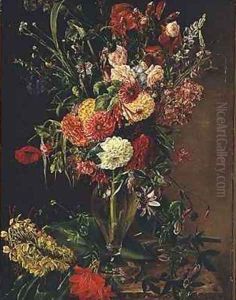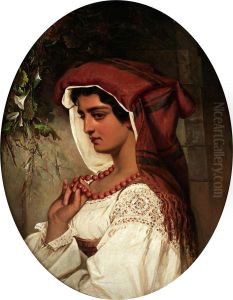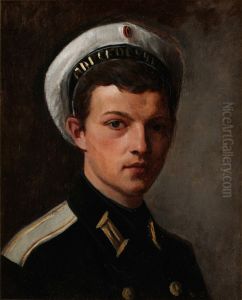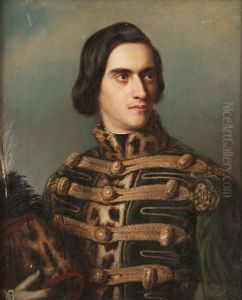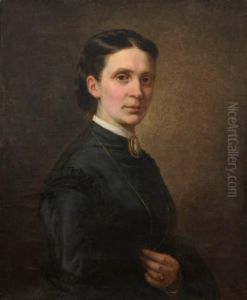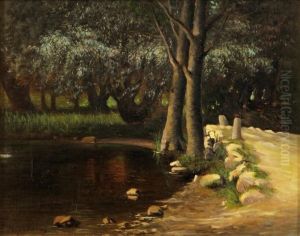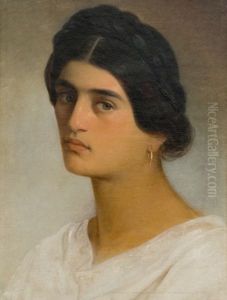Julie Wilhelmine Hagen-Schwarz Paintings
Julie Wilhelmine Hagen-Schwarz was a notable Baltic German painter born on December 27, 1824, in Tartu, then part of the Russian Empire (now Estonia). She hailed from an artistic family; her father, August Matthias Hagen, was a professor at the University of Tartu and a distinguished landscape painter, which undoubtedly influenced her early exposure and interest in the arts. Julie demonstrated exceptional talent in painting from a young age, and her father nurtured this talent, serving as her first teacher and mentor.
In pursuit of formal education, Julie went on to study at the Imperial Academy of Arts in Saint Petersburg, where she honed her skills and was exposed to the broader Russian art scene. Her education at such a prestigious institution was a significant achievement and testament to her talent, especially during a time when women faced numerous obstacles in pursuing careers in the arts. Julie specialized in portrait and genre painting but was also known for her landscapes and still lifes.
Her career flourished upon her return to Tartu, where she became an integral part of the local art scene. Julie married fellow artist Alexander von Schwartz in 1857, and the couple often worked and exhibited together. Despite the societal challenges of her time, including the limitations placed on women in the professional and public spheres, Hagen-Schwarz achieved considerable recognition for her work. She participated in numerous exhibitions, both in the Russian Empire and abroad, and her paintings were praised for their depth, sensitivity, and technical skill.
Julie Wilhelmine Hagen-Schwarz's legacy is marked by her contribution to the development of art in the Baltic region. Her portraits, often of local figures and family members, are celebrated for their psychological depth and realism. She is also remembered for her landscapes that capture the beauty of the Estonian countryside. Hagen-Schwarz was among the first professional female artists in the Baltic area, paving the way for future generations. She passed away on October 19, 1902, in Tartu, leaving behind a body of work that continues to be admired for its artistry and historical value.
